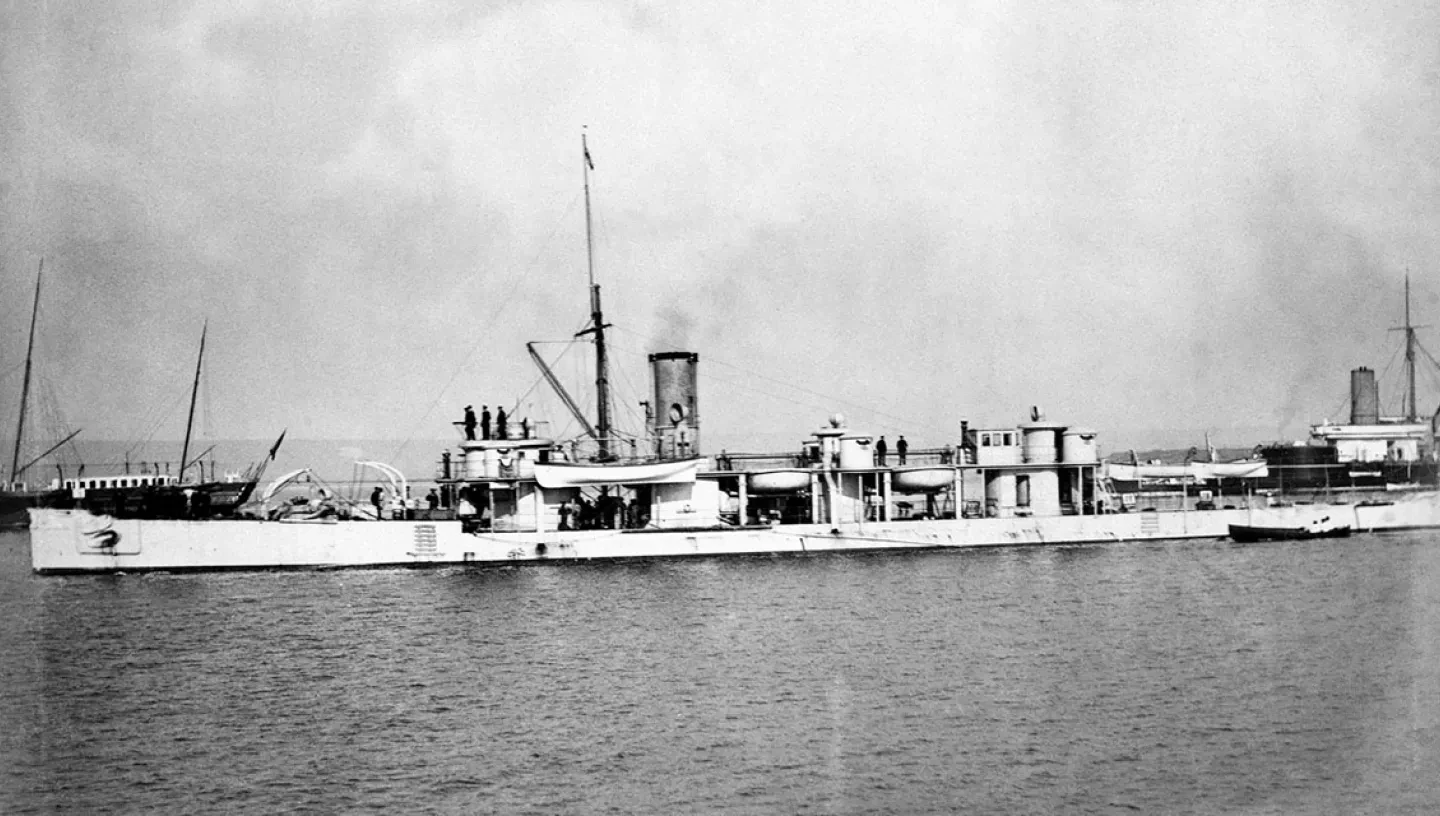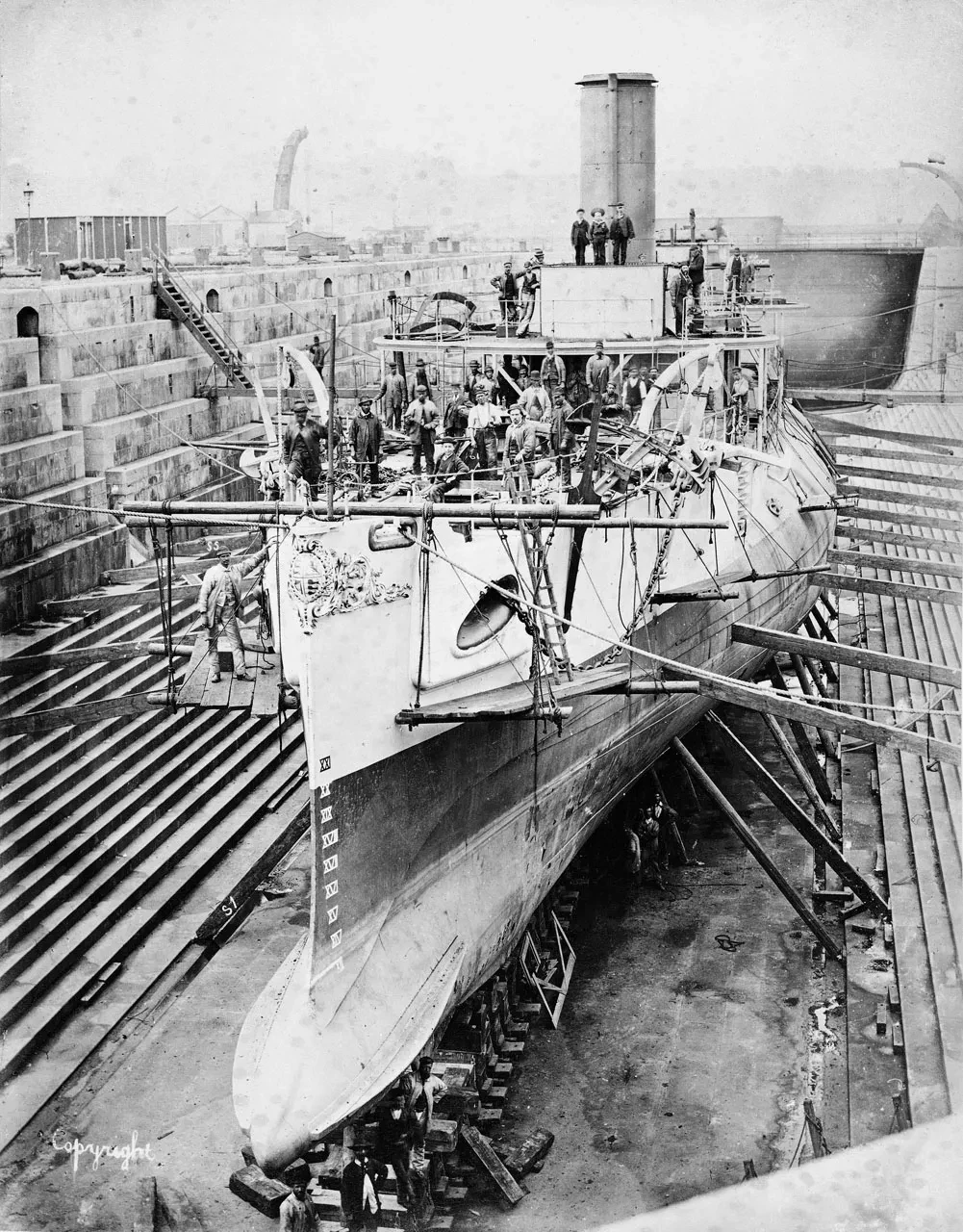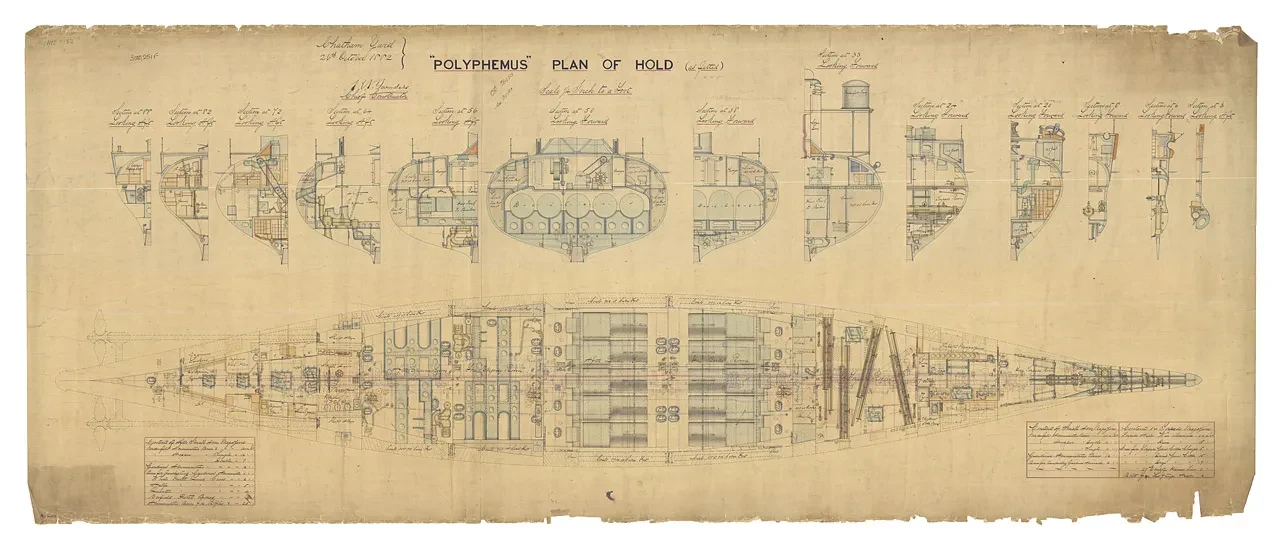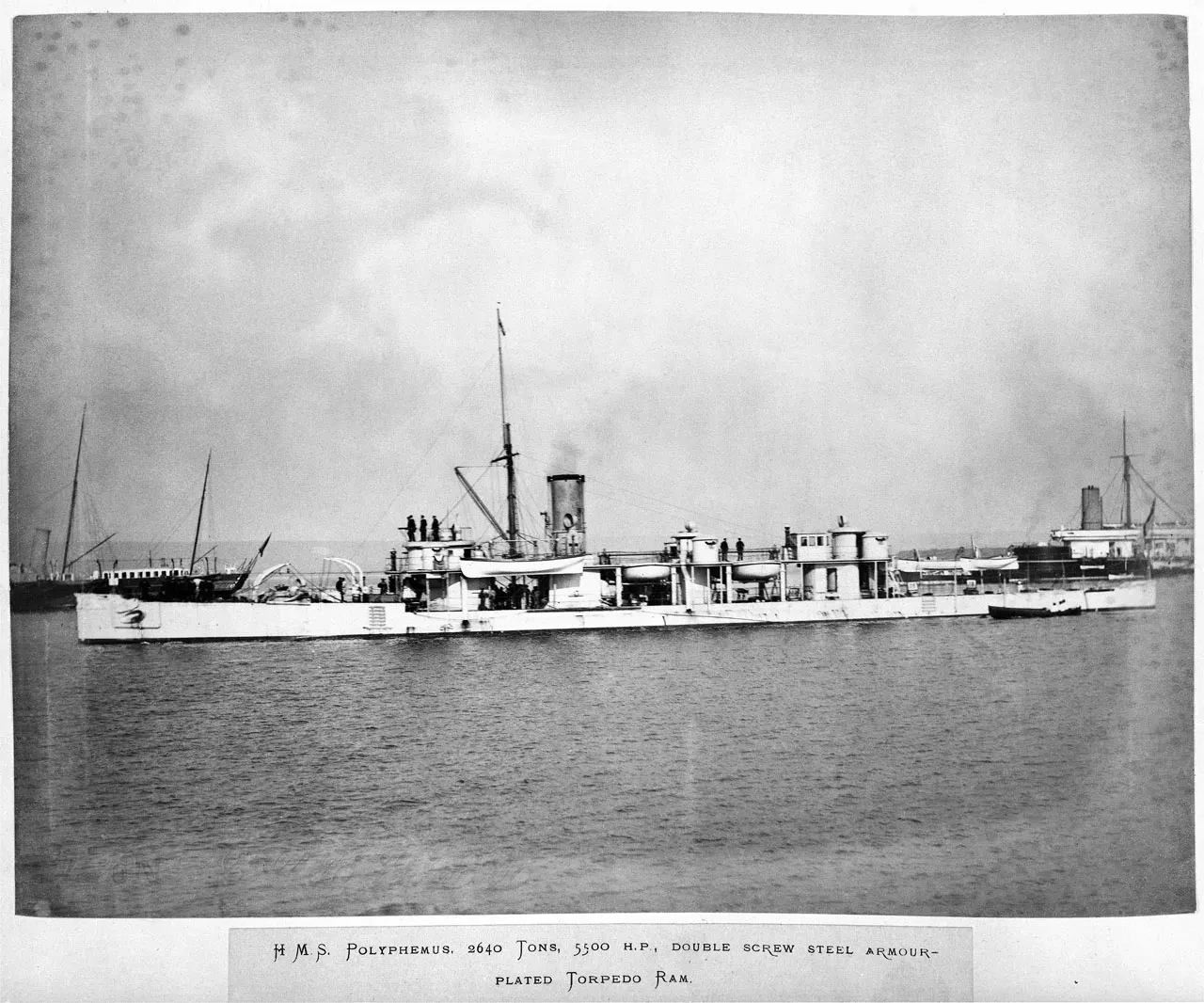
HMS Thunder Child is one of the most famous fictitious warships in English literature.
Her appearance in H. G. Wells’ classic novel The War of The Worlds marks one of the few bright spots in an otherwise dark tale.
Set in late Victorian Britain the book postulates an invasion of Earth by Martians, against whose technological prowess humanity is virtually helpless. When Martian tripods attack refugee shipping off the coast of Essex the Thunder Child intervenes, sacrificing herself and heroically destroying two tripods in the process.
Wells’ story was reinvigorated in the twentieth Century by Jeff Wayne’s hugely successful musical adaptation, which included a track titled ‘Thunder Child’.
The latter was, and is still, one of the most popular tracks in the entire album. Artist Michael Trim painted the iconic picture of the pivotal moment when Thunder Child attacks the Martians, and this image has become more associated in popular imagination with Wells’ warship than any other.
Beautiful and evocative though Trim’s painting is, however, it does not quite tally with the description of the ship in the novel. HMS Thunder Child never existed, but neither was it a pure figment of the imagination.
Wells entertained a lifelong fascination with technology and its potential, and often based the machines in his writing on reality.
In The War of the Worlds the descriptions offered by the character of the narrator point to one notable Victorian warship as the inspiration for the Thunder Child; HMS Polyphemus.

Completed in 1882 the ship’s tapered cylindrical hull foreshadowed those of early submarines. Even with upper works and a flimsy superstructure her form inevitably gave her an unusual, low-lying appearance, matching Wells’ description of a vessel “very low in the water, almost…like a water-logged ship.”
Her primary weapon was not, as many contemporary observers believed, her ram bow but the impressive battery of submerged torpedo tubes she carried below her waterline. In the novel, Wells uses the phrase “torpedo ram”, a technical term used by the Admiralty to describe only the Polyphemus.

Assuming Wells’ concept of the Thunder Child was for a ‘follow-on’ Polyphemus, it would help explain the hesitation the Martians show when confronted with this strange-looking vessel.
As the book has it “to their intelligence [Thunder Child] was even such another as themselves…They did not know what to make of her.” The invaders show no such hesitation in encounters with more common forms of human shipping.

Another giveaway is the description of the ironclad’s speed.
The historical Polyphemus was designed to be fast, achieving the then phenomenal speed of 18 knots (about 20 miles an hour). That would have made her as fast as the battleship depicted Trim’s painting, a design produced two decades later. Wells’ ship propels herself towards the Martians at such a pace “that in a minute she seemed halfway between the steamboat and the Martians—a diminishing black bulk against the receding horizontal expanse of the Essex coast.”
Historically, Polyphemus lasted through the 1890s before finally leaving service in 1903. In that time, her armament was improved with more powerful guns. It is not too much of a leap to imagine the outlandish, twin-funnelled Thunder Child to be a slightly faster, better armed version of this successful ship.
Although none of her company has a voice in either the book or the musical, Thunder Child seldom fails to draw an emotional reaction.
Perhaps it is the timeless appeal of heroism in the face of impossible odds, or the strange fascination with existential threat that has permeated much science fiction writing from Victorian times to the present day.
Whatever the case, she has clearly left her mark, including at least one ‘spin off’ novel that focuses on the doomed ship and her brave, ill-fated crew.
Given the popularity of the Jeff Wayne adaptation and the iconic nature of Trim’s painting it is likely that the image of Thunder Child in popular consciousness will remain that of a late Victorian battleship.
However, with the new BBC television adaptation, which will be the first of its kind to set the story in Britain in the correct period, it is worth revisiting this significant moment in H. G. Wells’ popular and terrifying vision of a war that –thankfully- never was.
